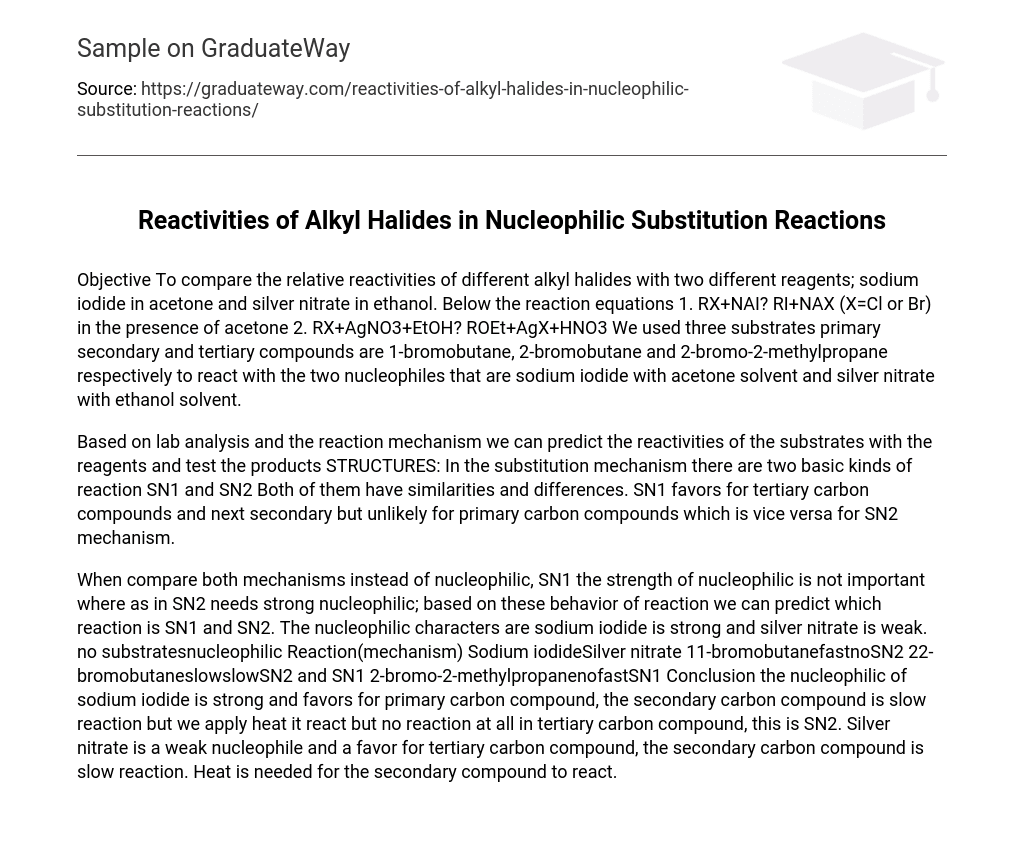The experiment aimed to compare the reactivities of different alkyl halides using two reagents: sodium iodide in acetone and silver nitrate in ethanol. The reaction equations for these reactions are as follows: 1. RX + NAI → RI + NAX (X=Cl or Br) with acetone present. 2. RX + AgNO3 + EtOH → ROEt + AgX + HNO3.
Three substrates were utilized in this experiment: primary, secondary, and tertiary compounds. Specifically, 1-bromobutane, 2-bromobutane, and 2-bromo-2-methylpropane respectively were used as the substrates. These substrates underwent reactions with the nucleophiles sodium iodide in acetone solvent and silver nitrate in ethanol solvent.
The reactivities of substrates with reagents and the structures of the products can be predicted based on lab analysis and the reaction mechanism. There are two basic kinds of reactions in the substitution mechanism: SN1 and SN2. Both reactions have similarities and differences. SN1 is more favorable for tertiary carbon compounds, followed by secondary carbon compounds. In contrast, SN2 is less likely to occur in primary carbon compounds, which is the opposite for SN1 mechanism.
Comparing nucleophilic substitution mechanisms, it is important to note that nucleophilicity strength plays a crucial role in SN2 reactions but not in SN1 reactions. Sodium iodide demonstrates strong nucleophilicity, while silver nitrate exhibits weak nucleophilicity.
When reacting with the substrate 1-bromobutane, sodium iodide results in a fast reaction, indicating an SN2 mechanism. However, silver nitrate leads to a slow or non-existent reaction, suggesting either an SN1 or SN2 mechanism. For 2-bromobutane, both sodium iodide and silver nitrate cause a slow reaction, supporting possible involvement of both SN2 and/or SN1 mechanisms. The reaction for 2-bromo-2-methylpropane is not fast, indicating an SN1 mechanism.
In summary, sodium iodide displays strong nucleophilicity and favors primary carbon compounds. Its reaction is slow for secondary carbon compounds unless heat is applied. Tertiary carbon compounds do not undergo any reaction, implying an exclusive reliance on the SN2 mechanism. On the other hand, silver nitrate exhibits weak nucleophilicity and prefers tertiary carbon compounds. It reacts slowly with secondary carbon compounds but can proceed with heat application if needed.





